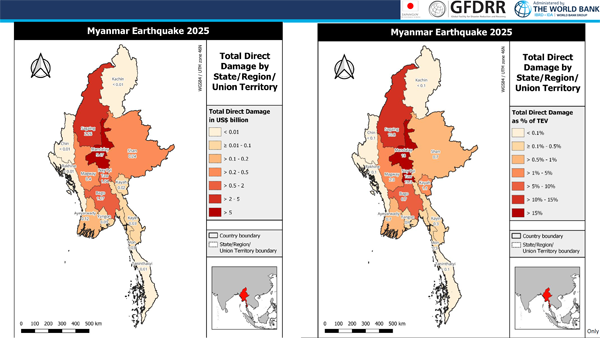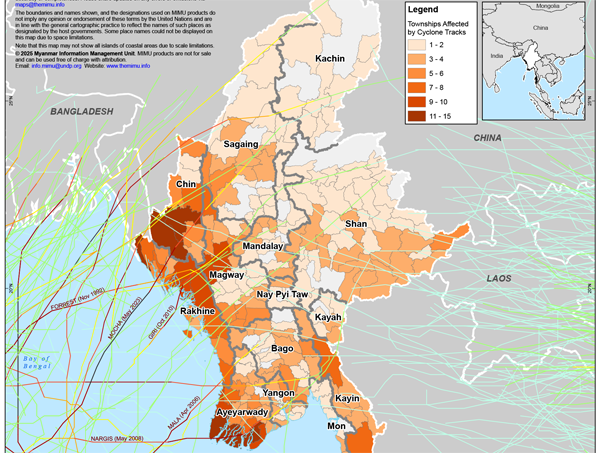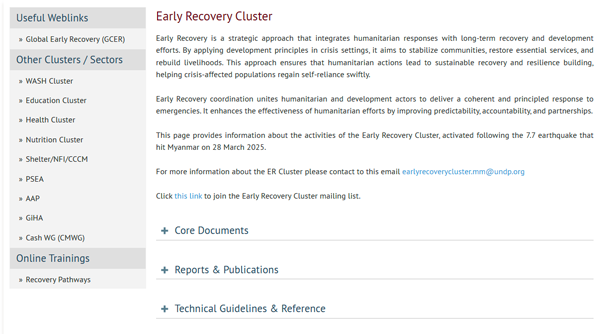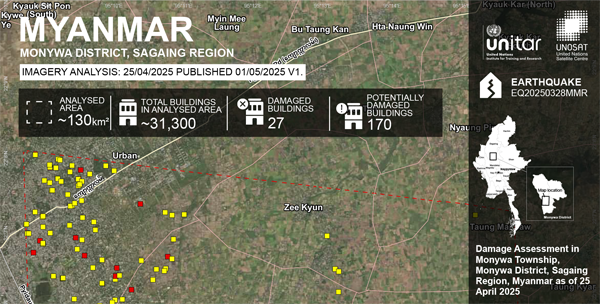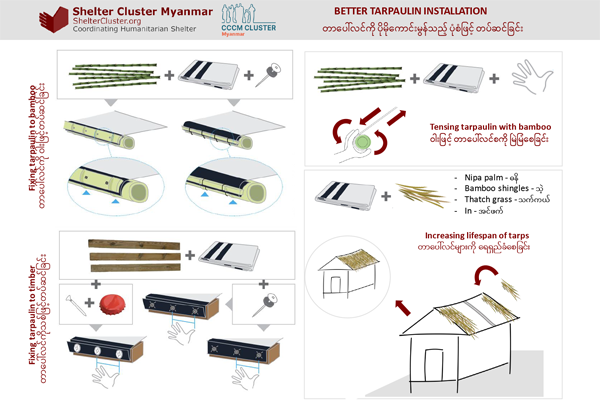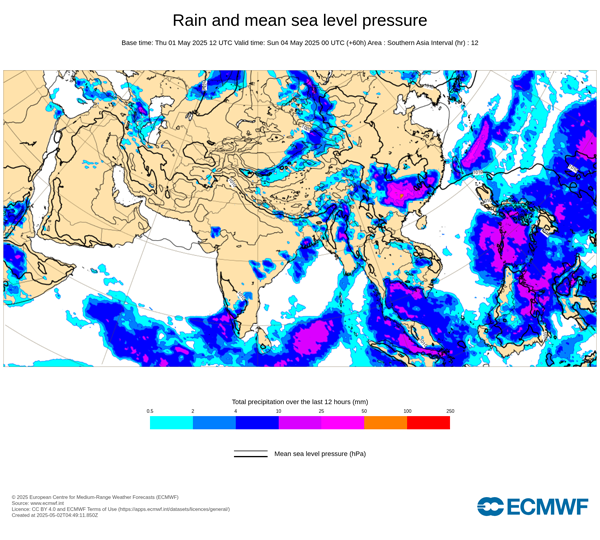Five weeks after the devastating earthquakes struck Myanmar on 28 March, many affected communities are still in urgent need of safe shelter, health care, clean water and sanitation, cash assistance and various forms of protection support.
An early monsoon season has started with daily rains this week, exacerbating hardships for families living in tents and makeshift shelters, and increasing health risks. While needs for emergency assistance remain high, early recovery and livelihood support is vital to help affected people rebuild and restore their lives.
See the breakdown of needs, responses and activities from the latest Situation Report #5 from UNOCHA.
- Early Recovery - Urgent support needed to restart local markets and provide affordable farming supplies in Magway, Mandalay and Sagaing to avoid delays in the upcoming monsoon planting season. With recent strong winds, Southern Shan needs support to address power outages, restore livelihoods, and provide mental health support. Over 9,000 displaced households in affected regions require immediate assistance with housing, land, and property issues + support to rebuild communities safely and inclusively. Support is also needed for safe rebuilding through technical advice, safety checks of buildings, better water and sanitation in shelters, and psychosocial services.
- Education in Emergencies - A total of 18,000 education learning pack (ELP) kits are needed for 129 monastic schools in Mandalay, Nay Pyi Taw, and Sagaing. Also in central and north western Myanmar, there are needs for structural assessments for eight monastic schools in Mandalay and Sagaing
- Food Security - A rapid needs assessment by Food Security Cluster (FSC) partners identified serious challenges to livelihoods and food access. About 38 per cent of surveyed communities rely on aid or support from friends and relatives to meet food needs, particularly in Magway, Mandalay, Nay Pyi Taw, Sagaing, and southern Shan. Severe food access issues were reported across all surveyed communities in Magway Region (especially in Chauk, Myothit, Taungdwingyi, and Yenaungyang townships) and in Mandalay Region (Kyaukse, Myittha, and Sintgaing townships) and Sagaing Region
- Health – Partners report continued shortages of essential medicines, especially for common conditions such as diabetes and hypertension. Most partners rely on local pharmaceutical procurement, but there is an urgent need to conduct a market survey to identify reliable suppliers that source internationally from prequalified providers. Psychological distress is increasing in many earthquake affected areas due to delays in treatment and a critical shortage of trained mental health professionals. Limited access to water and sanitation is contributing to poor hygiene, leading to a raise in skin diseases. Delayed rubble clearance and stagnant water are creating breeding grounds for mosquitoes, heightening the risk of malaria and dengue.
- Logistics – evaluating additional storage needs in areas affected by the earthquakes. A total of 325 cubic meters of common storage space has been made available at the Yangon warehouse, with ongoing coordination for dispatches to the Mandalay warehouse. In Mandalay, 1,000 square meters of storage space is available, including temperature controlled areas
- Nutrition – Cluster partners have distributed essential food items – including rice, chickpeas, cooking oil, and iodized salt – to 29,472 households in Mandalay and Sagaing. Fortified biscuits were provided to 15,502 households across 8 townships in Mandalay Region, and blended food was delivered to 190 households.
- Protection – Urgent measures are required to reduce overcrowding and mitigate gender based violence (GBV) risks. Expanded MHPSS services are needed to address trauma, stress, and anxiety resulting from conflict, displacement, and the loss of homes, livelihoods, and loved ones. Support is needed to help affected people to restore civil documentation, including key identity and legal documents that were lost during the earthquakes. Earthquake affected communities sheltering in open areas – such as public markets and private land – have reported evictions or received orders to vacate these temporary locations.
- Shelter, NFI, CCCM – Preliminary rapid needs assessments (RNA) show that 52 per cent of houses in assessed villages across 55 townships are damaged. 74 % of the worst affected townships remain without shelter assistance, and 50 per cent lack NFI support. In most reached areas, over 75% of targeted people still need aid. Over 100 collective centres and informal sites lack proper site management systems, exposing displaced people to safety, security, and protection risks.
- WASH – Access to safe drinking water remains a major concern. While river water is available for domestic use, drinking water is scarce for affected communities in Sagaing Region. Critical water systems, such as collapsed storage tanks, broken distribution pipes and non functional pumps require urgent technical repair and replacement to restore safe water access. Hygiene promotion, especially on the prevention of acute watery diarrhoea (AWD), must be urgently scaled up to mitigate public health risks. Rural displacement sites lack solid waste management systems, posing serious environmental and health hazards.

